All about rugs for needlework
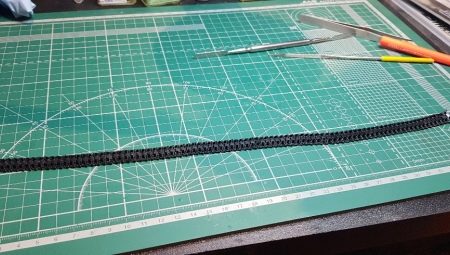
If you like to do needlework, then you should purchase a special rug for this. These products are created from a strong and dense base that allows you to work with scissors, a stationery knife and other tools without fear of damaging the work surface. The article below will talk about the features of such products, their types and characteristics.
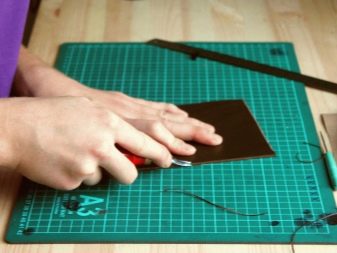
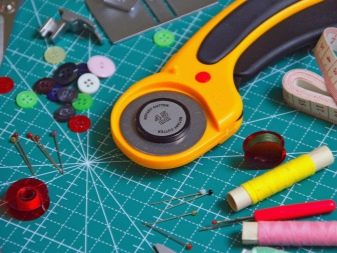
Description
Handicraft rugs are special products made of polymer material. On their surface there are metric and inch markings, which can be placed either on one side, or on both at once.
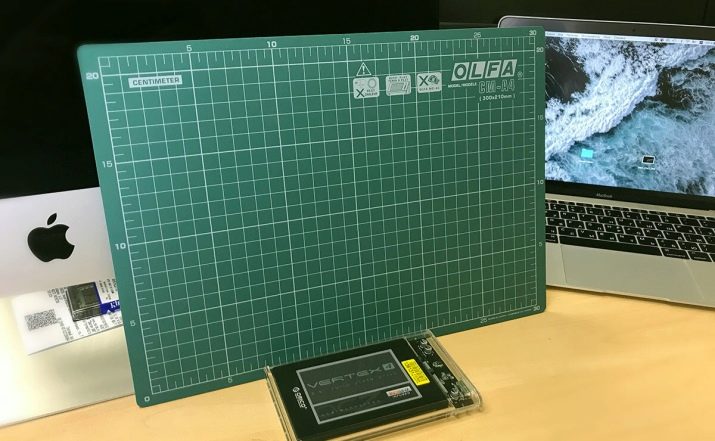
The surface of this material is rough, due to which, during the use of the finished product, sliding on the working surface is prevented. The sizes of rugs are very different: in stores, models with formats from A1 to A4 are most often found. In this case, the most popular copy is the A3 format.
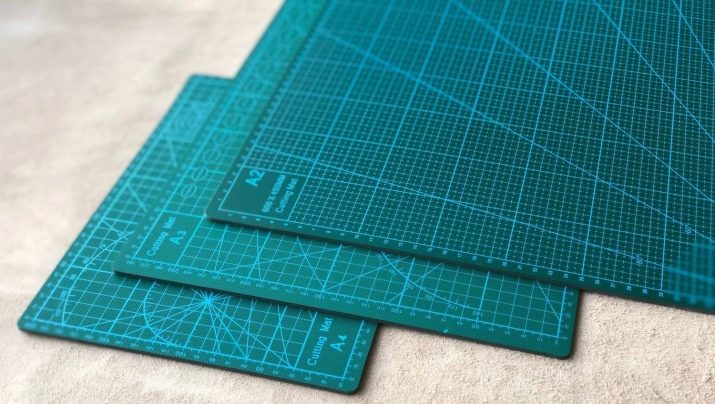
Rugs of this type, as a rule, consist of several layers at once. The outer part is represented by two layers with markings. The interior includes a cut-proof interlayer that provides protection against cut-throughs during operation. Due to several layers of material, the products end up as dense as possible, it is difficult to bend or deform them.
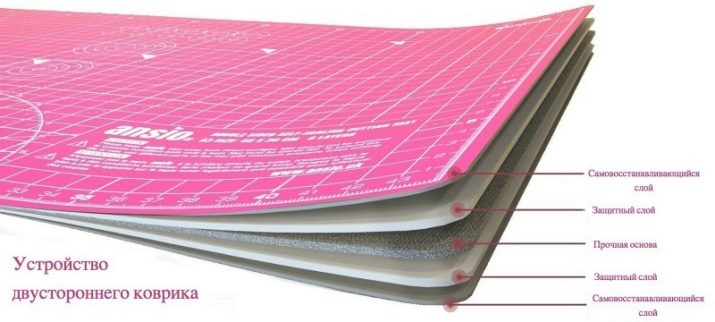
There is a convenient marking on the surface of the top layer, which allows you to work with maximum accuracy, it is easy to measure the required amount of material. These rugs make it especially quick and easy to work with fabric. They are often used for scrapbooking, quilling, patchwork, as well as for working with plasticine masses, colored paper and cardboard.
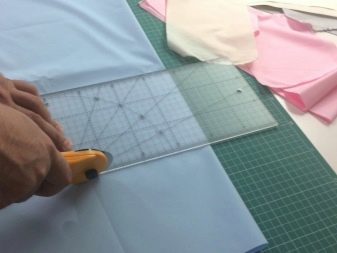
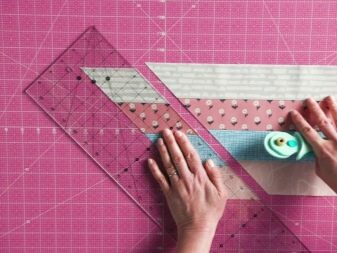
Most often, these products are dark green in color. At the same time, all markings are made in bright yellow in order to be clearly visible on the working background.
Not so long ago, models of pink, purple and other colors began to be produced.
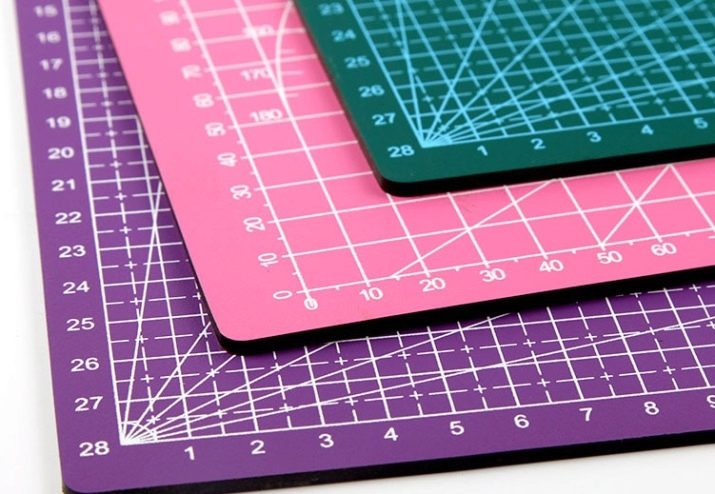
Views
The cut-proof needlework rug can be produced in different types. Let's highlight two of them.
- Standard floor mats. These materials have a thickness ranging from 1.5 to 3 mm. Sizes may vary. Such models are considered the most suitable options for cutting something.
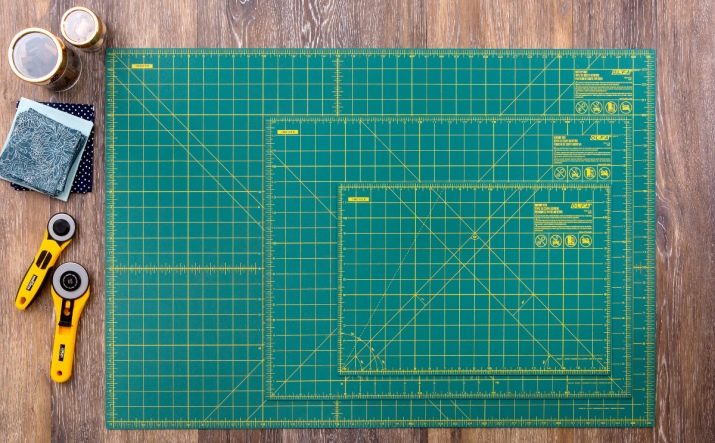
- Reversible self-healing models. These scribes have a rubber layer on both sides, which provides the best grip on the table surface, preventing the mat from sliding on it. Reversible models have a centimeter line on one side and an inch line on the other.
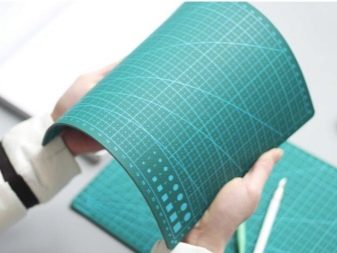

The type of marking may differ for different models. So, some samples have a standard grid, but there are also products with a grid and corners, with a set of squares and circles. On some varieties, even a protractor is provided for determining angles, curves with different radii of their curvature.

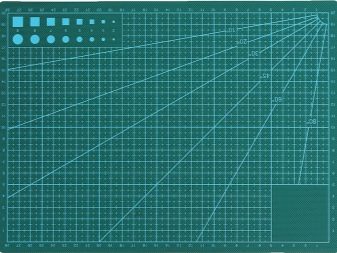
Most often, a needlework rug has a standard rectangular shape. But there are also rotary type specimens that are one-sided products. Sometimes in stores you can see special folding models, which, as a rule, have relatively large dimensions (60x90 cm). True, when folded, they measure 60x45 cm.
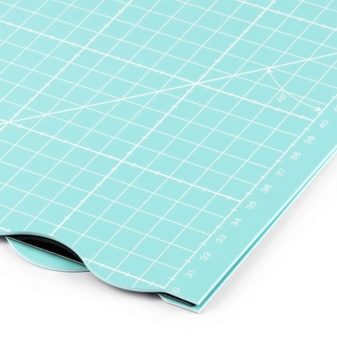
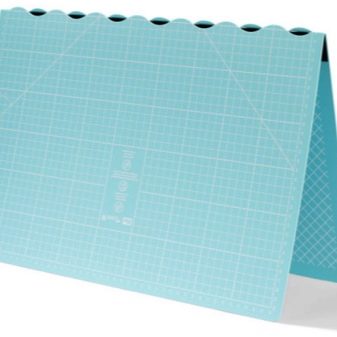
Manufacturers can also offer products with flannel on one side. Models of this type can be used not only for cutting. They can also work with an iron. The middle layer in such rugs is made of heat-resistant material that does not allow high temperatures to pass to the cutting side.
How to use?
In order for the needlework mat to serve as long as possible, you should remember the important rules for its operation.
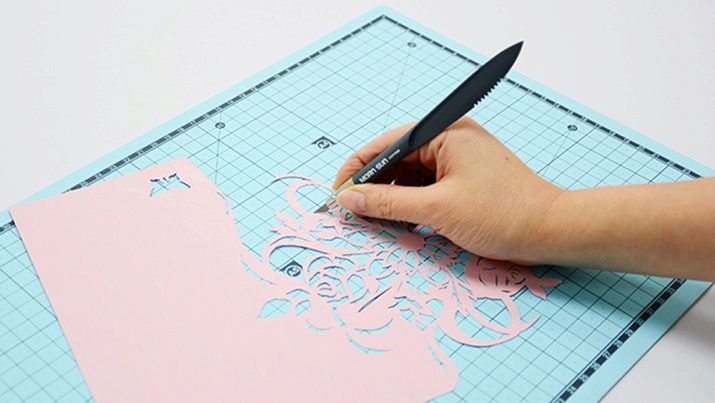
Protect such products from adhesives, various dyes and solvents. In addition, you need to ensure that direct sunlight does not fall on its surface. You should also not leave the rugs near heating equipment, as this can lead to the loss of the material's properties for self-healing due to excessively high temperatures.
Besides, do not store or use the mat in extremely cold temperatures. This can also lead to the loss of the ability to restore the properties of the material.
It is recommended to store the rugs flat - you do not need to roll them up. In this case, it is better to choose a place that is not exposed to moisture, cold, light and heat.
During storage, do not put any heavy objects on the rugs - this can lead to a violation of the porous structure. Bending the material too often is also not worth it. Otherwise, the surface can quickly crack, becoming unsuitable for high-quality and safe work.
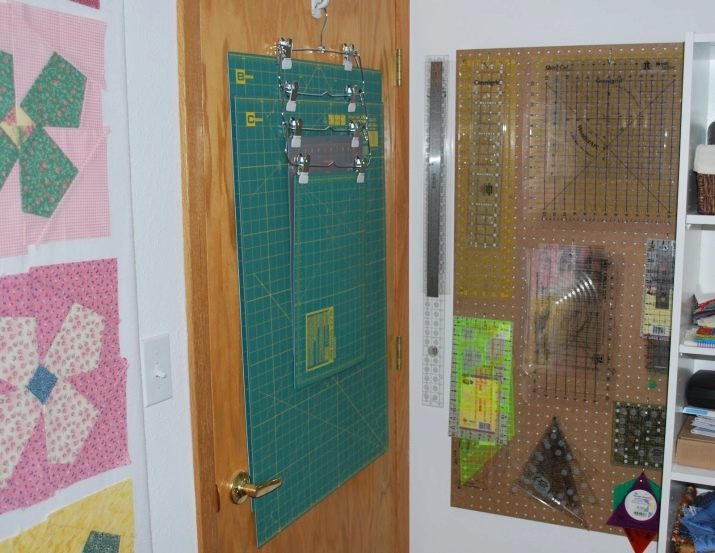
If through cuts nevertheless appear on the rug, then its parts will need to be tightly squeezed and fixed in this position. They will reunite as one. However, this will not restore structural integrity.







